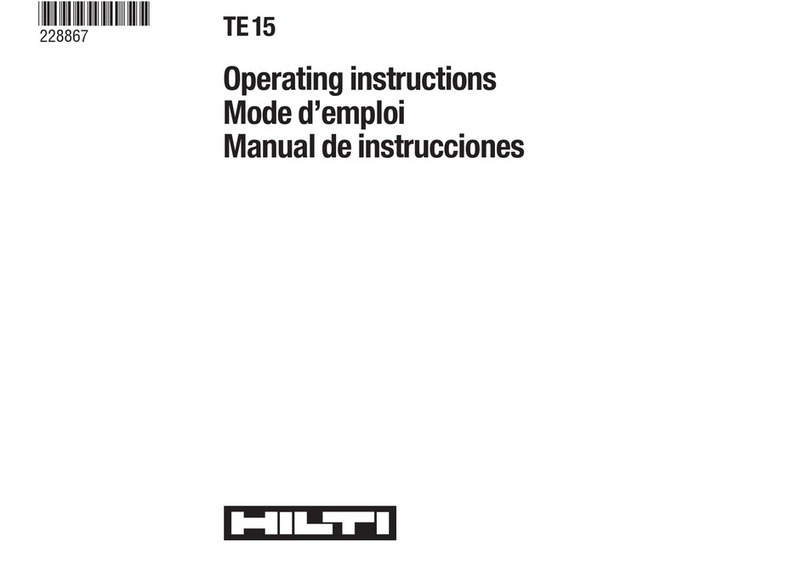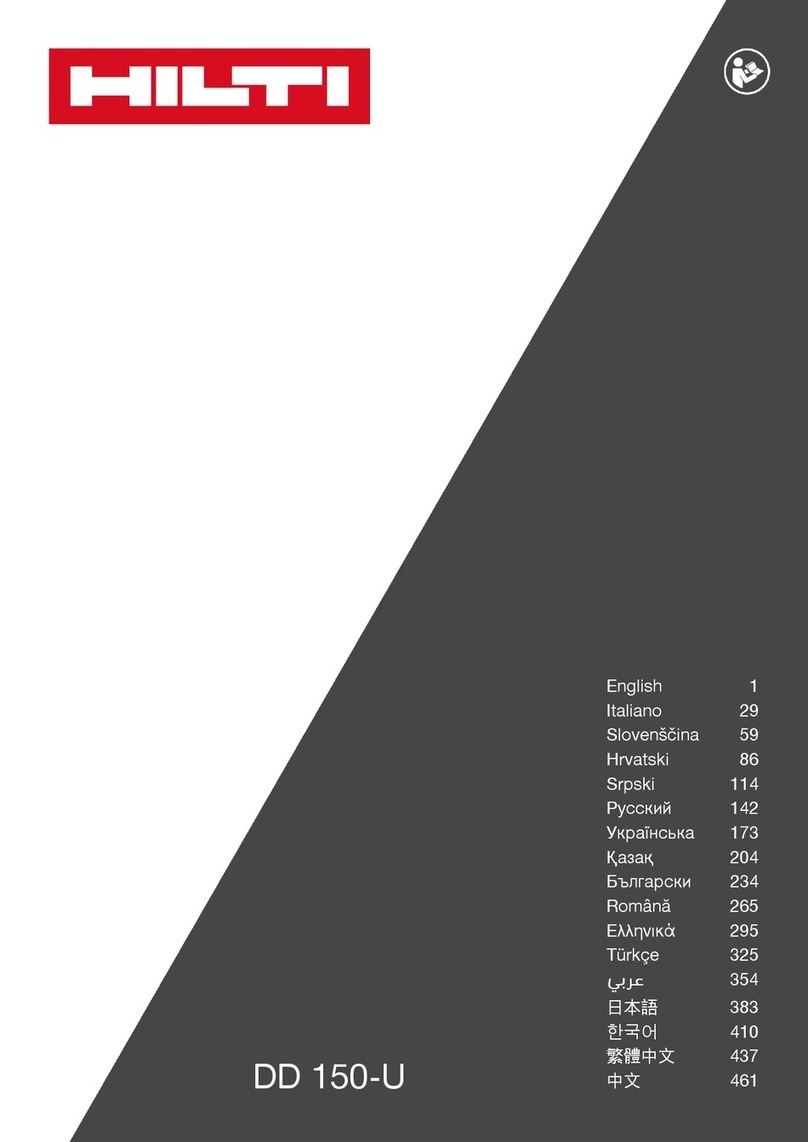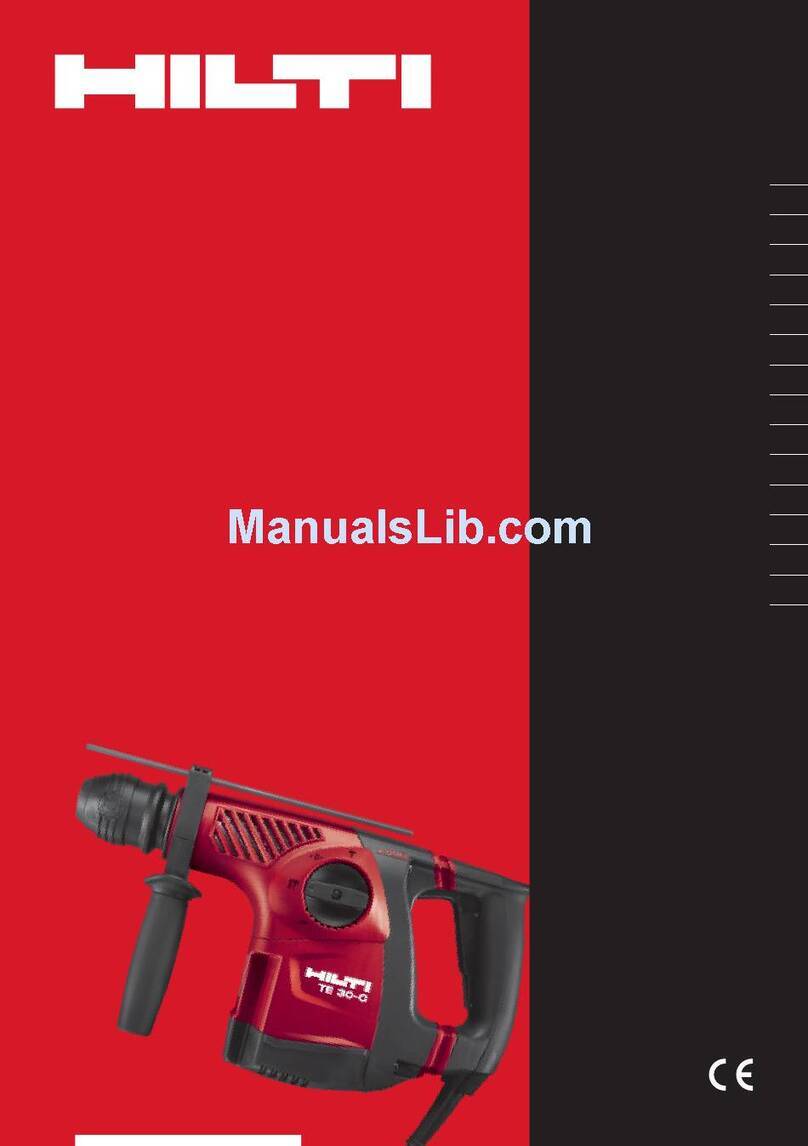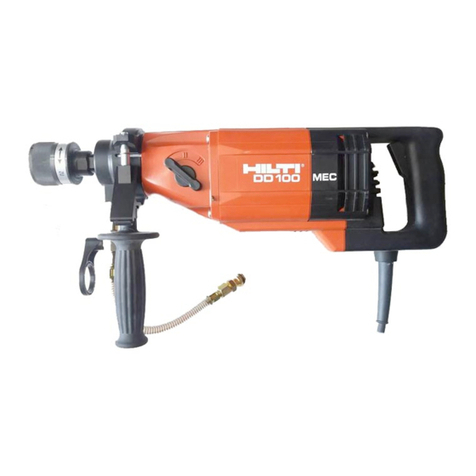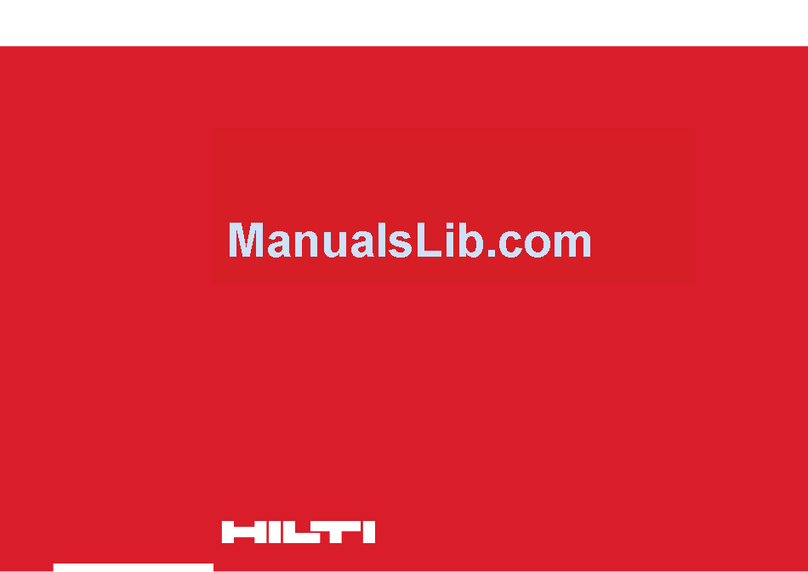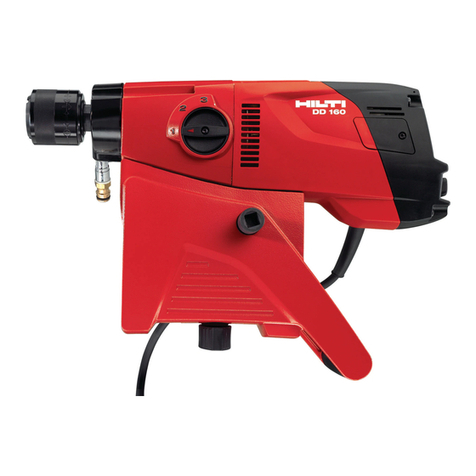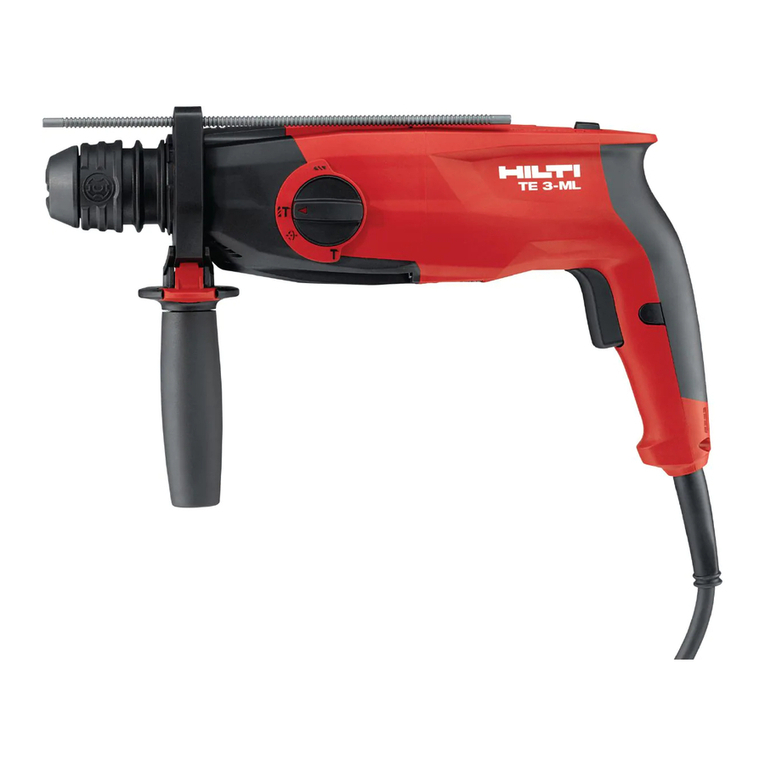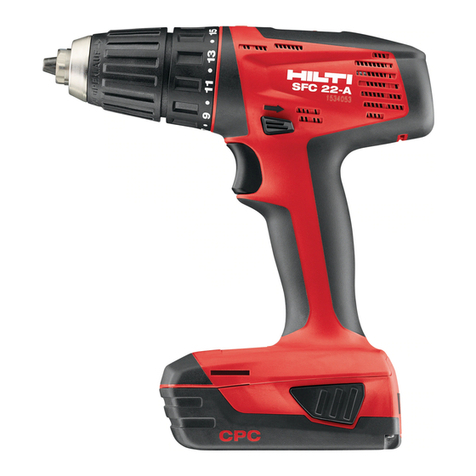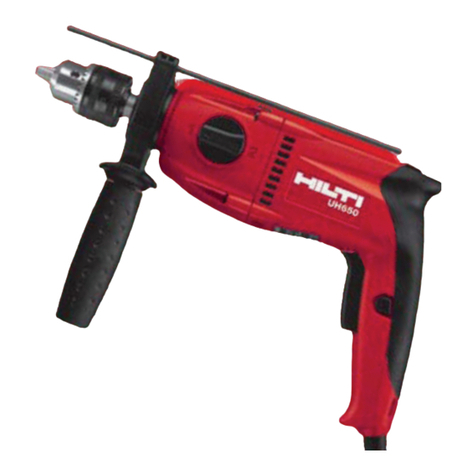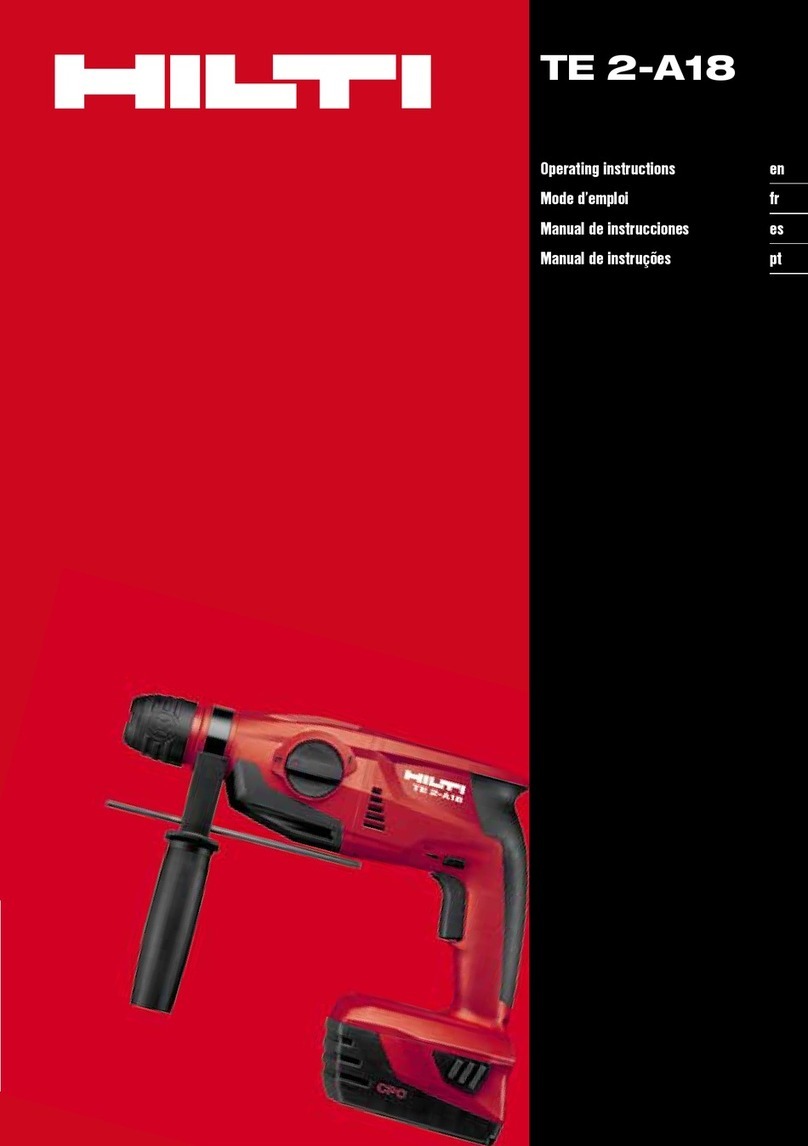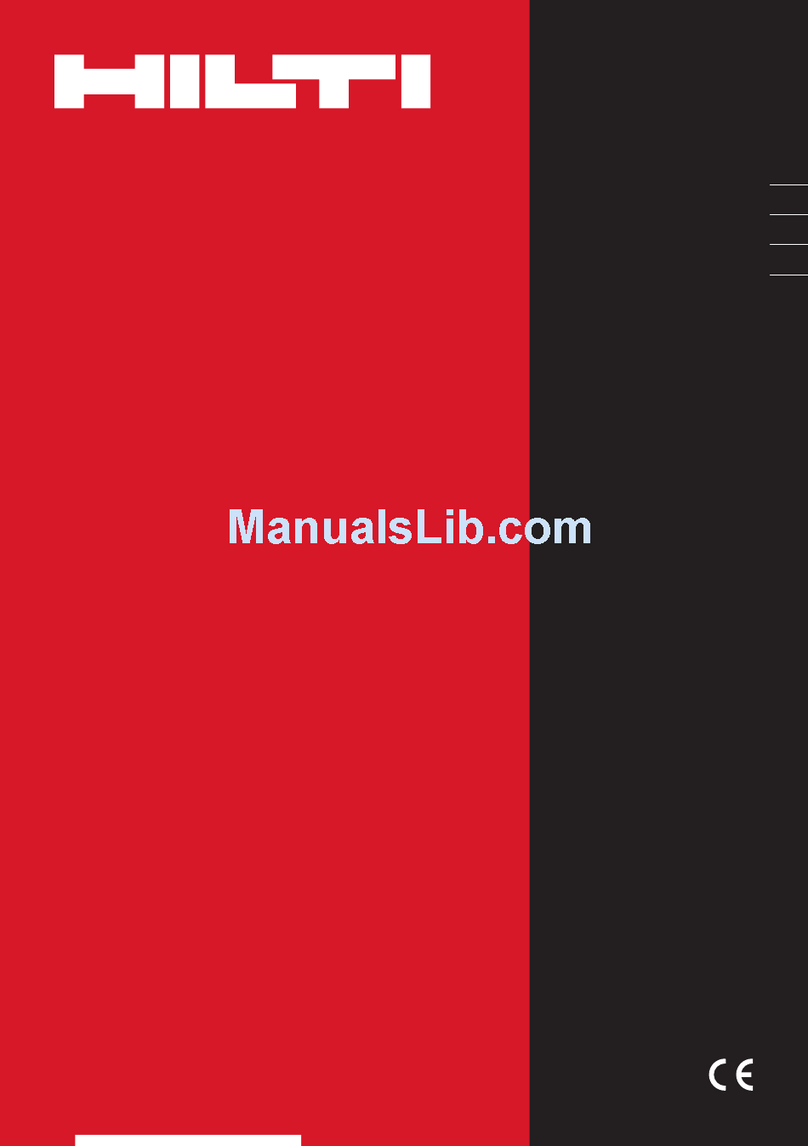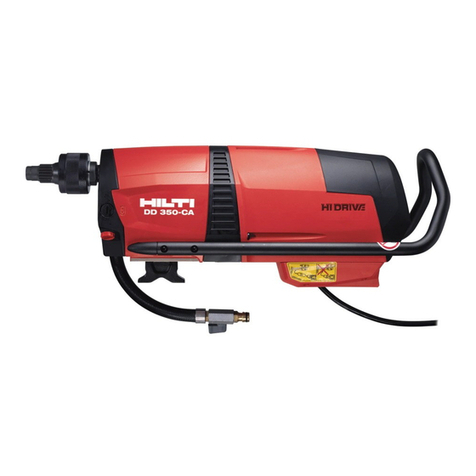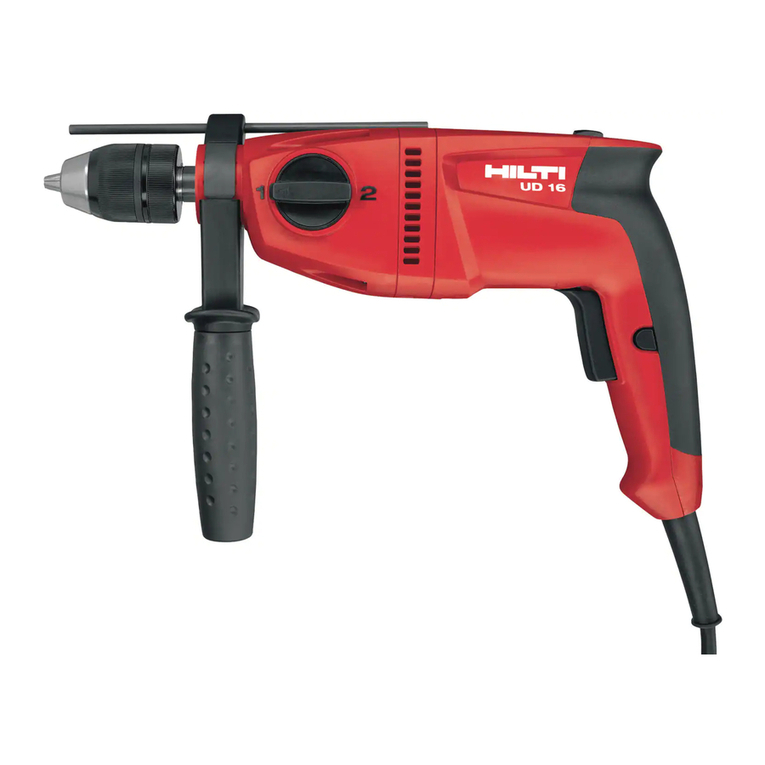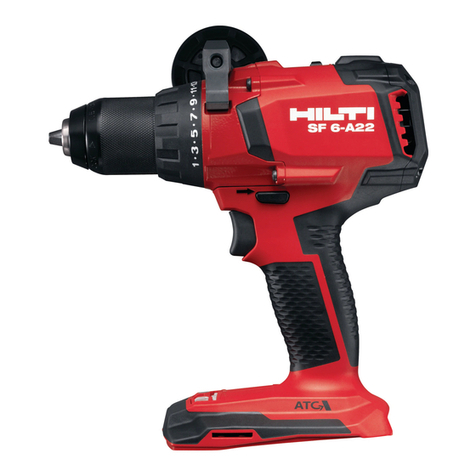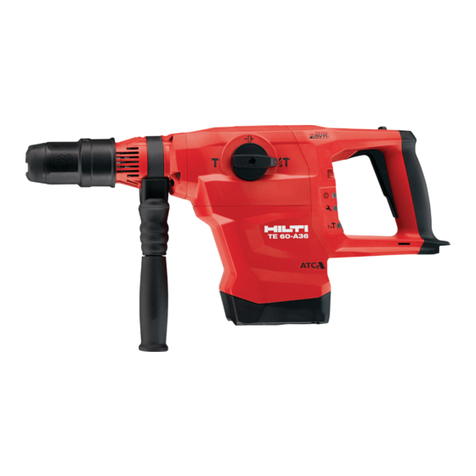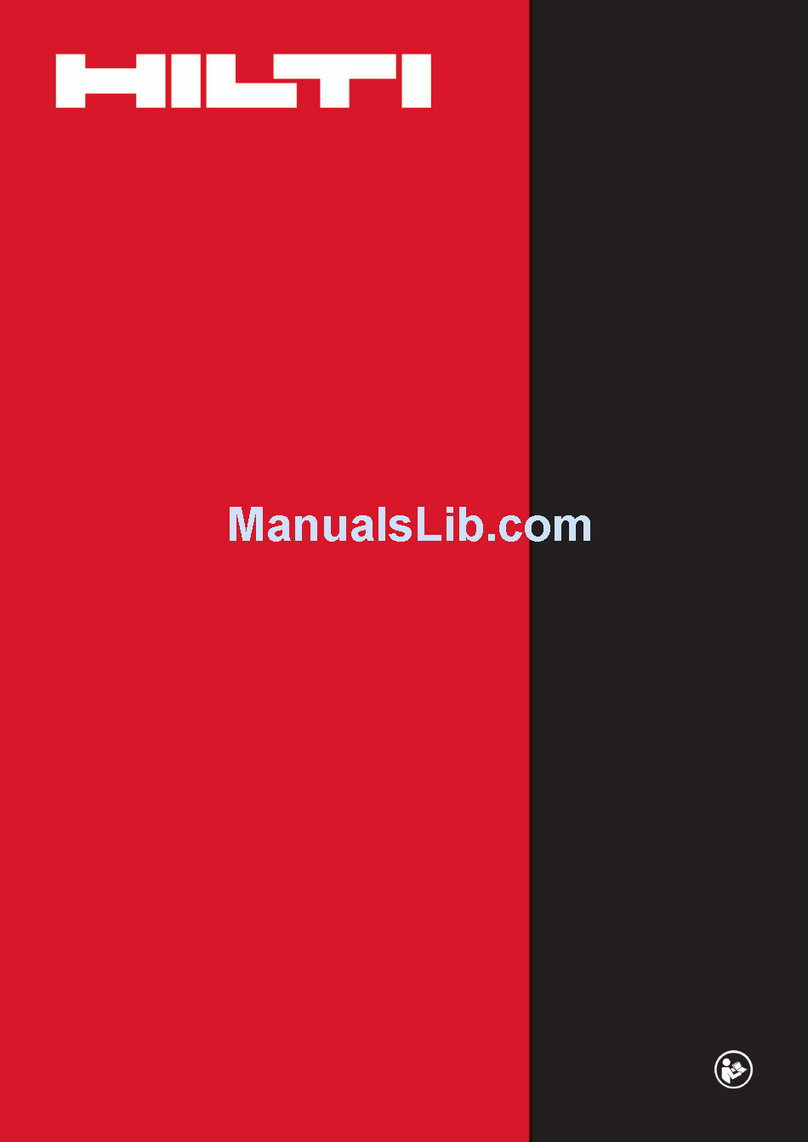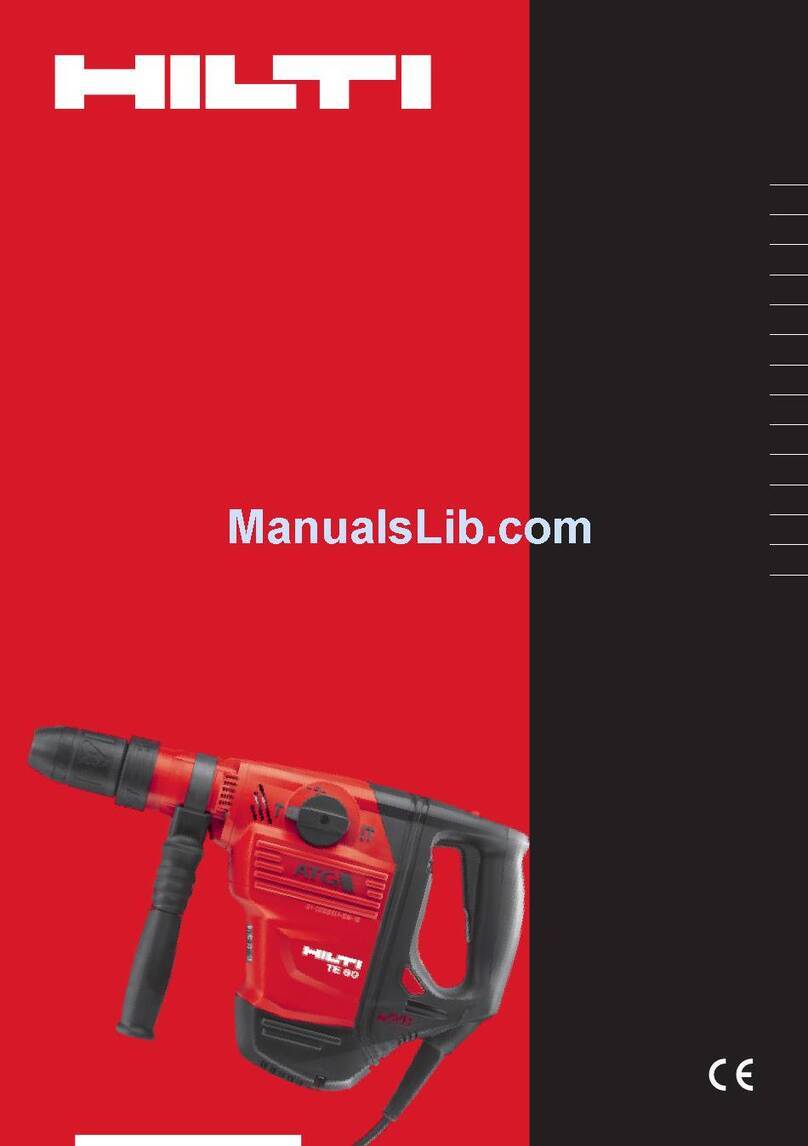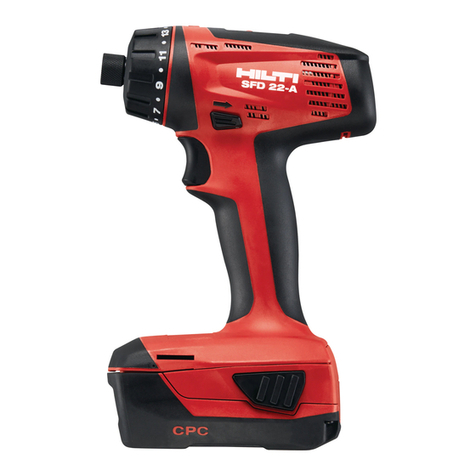en
When battery pack is not in use, keep it away from
other metal objects like: paper clips, coins, keys, nails,
screws, or other small metal objects that can make a
connection from one terminal to another.
Shorting the battery terminals together may cause sparks,
burns, or a fire.
Maintain tools with care. Keep cutting tools sharp and
clean.
Properly maintained insert tools with sharp cutting edge
are less likely to bind and are easier to control.
Check for misalignment or binding of moving parts,
breakage of parts, and any other condition that may
affect the tool’s operation. If damaged, have the tool
serviced before using.
Many accidents are caused by poorly maintained tools.
Use only accessories that are recommended by the
manufacturer for your model.
Accessories that may be suitable for one tool may cre-
ate a risk of injury when used on another tool.
2.6 Service
Tool service must be performed only by qualified repair
personnel.
Service or maintenance performed by unqualified per-
sonnel may result in a risk of injury.
When servicing a tool, use only identical replacement
parts. Follow instructions in the Maintenance section
of this manual.
Use of unauthorized parts or failure to follow Mainte-
nance Instructions may create a risk of shock or injury.
3. Specific safety rules and symbols
Hold tool by insulating gripping surfaces when per-
forming an operation where the cutting tool may con-
tact hidden wiring.
Contact with a „live“ wire will make exposed metal parts
of the tool „live“ and shock the operator.
WARNING: Some dust created by grinding, sanding,
cutting and drilling contains chemicals known to cause
cancer, birth defects, infertility or other reproductive
harm; or serious and permanent respiratory or other
injury. Some examples of these chemicals are: lead from
leadbased paints, crystalline silica from bricks, concrete
and other masonry products and natural stone, arsenic
and chromium from chemicallytreated lumber. Your risk
from these exposures varies, depending on how often
you do this type of work. To reduce exposure to these
chemicals, the operator and bystanders should work
in a well-ventilated area, work with approved safety
equipment, such as respiratory protection appropriate
for the type of dust generated, and designed to filter
out microscopic particles and direct dust away from
the face and body. Avoid prolonged contact with dust.
Wear protective clothing and wash exposed areas with
soap and water. Allowing dust to get into your mouth,
eyes, or to remain on your skin may promote absorption
of harmful chemicals.
The tool is not intended for use by children, by debil-
itated persons or those who have received no instruc-
tion or training.
Children must be instructed not to play with the tool
Wear ear protectors when using the tool for extended
periods.
Prolonged exposure to high intensity noise can cause
hearing loss.
3.1 Take the necessary precautions to make the
workplace safe
GEnsure that the workplace is well ventilated.
GKeep the workplace tidy. Objects which could cause
injury should be removed from the working area. Untidi-
ness at the workplace can lead to accidents.
GWear goggles.
GWear protective gloves to avoid cutting the fingers
when changing insert tools.
GDo not permit other persons to touch the tool.
GCheck the area behind the wall you are working on
before drilling right through and when using long drill
bits.
GConcealed electric cables or gas and water pipes pre-
sent a serious hazard if damaged while you are working.
Accordingly, check the area in which you are working
beforehand (e.g. using a metal detector). Avoid con-
tact between your body and earthed / grounded objects,
such as pipes or radiators. External metal parts of the
tool may become live, for example, when an electric
cable is drilled into inadvertently.
3.2 Aditional general safety precautions
GUse the right electric tool for the job. Do not use the tool
for purposes for which it was not intended. Use the tool
only as directed and when it is in faultless condition.
GAvoid contact with rotating parts.
3
Printed: 07.07.2013 | Doc-Nr: PUB / 5070812 / 000 / 00
